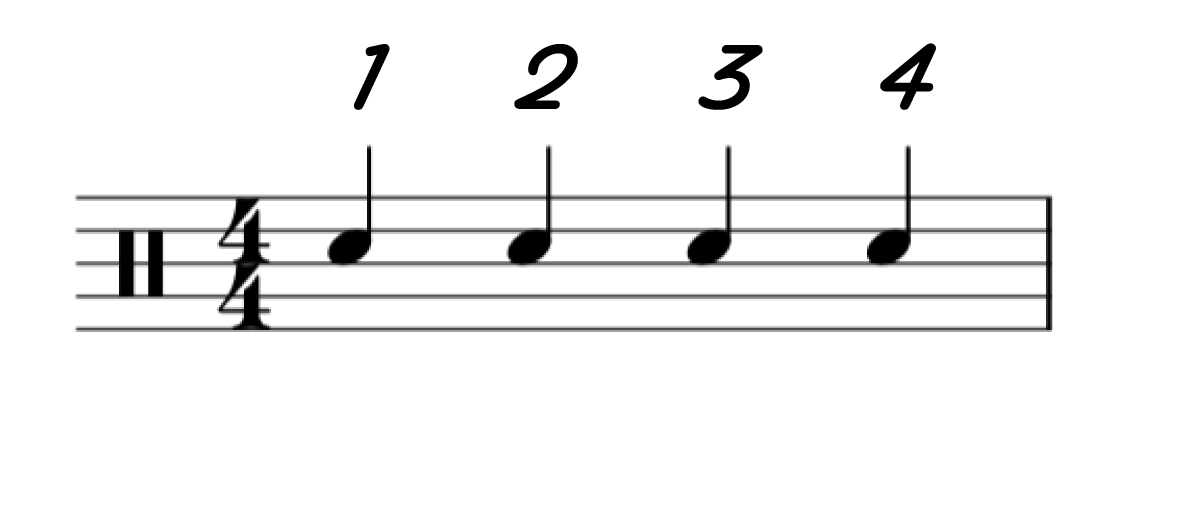Learn To Read Drum Music - Part 1 - The Basics
In this series I'll be teaching y'all how to read drum music. Reading drum music (also called notation) is pretty straightforward, especially if you have any previous experience with reading music from another instrument. If you've never even seen written music before, let alone drum notation, this post is for you!
The Staff

The first thing we need to establish is what the staff is. The above image is of a standard staff (stave) using the percussion clef with a 4/4 time signature. Each stave is broken down into smaller sections called bars (or measures). To make things easier to read, each bar is separated by a barline. In this particular staff, there are 4 bars.
Here is a broken down, detailed version of the staff:

The Clef is used to determine how exactly the music is supposed to be read. For our beginner purposes, the clef is relatively unimportant since drum music doesn't exactly require one. Sometimes you'll see the percussion clef switched out for a bass or treble clef, but for now don't worry about it.
Time Signatures
this is where things can get slightly confusing, so for now we will keep things simple. In North America, standard time is traditionally in 4/4 (said: "four, four"). The first number tells you how many beats are in one bar, and the bottom number dictates what the value of one beat is.
So in 4/4 time, there would be four beats in the bar, and each beat will be worth one quarter note. Don't worry if this doesn't make sense, we will get deeper into time signatures later. This brings us to the next part, the quarter note.
The Quarter Note

This is a quarter note. In 4/4 time, it is worth one beat of the bar. If you're a math whiz, it's worth one quarter of a bar (hence the name). Considering the top number of the time signature said that there were 4 beats in the bar, we would be able to put 4 quarter notes into one measure:

At this point you can already read drum music. Take your hands and play the above measure on your desk. Count out loud "one, two, three, four" as steady as you can, and then strike your desk along to the beat. Easy right?
If you've had any experience reading music before, you'll notice that the quarter notes are placed on the standard "C" space on the staff. This indicates that you'll be hitting the snare drum. We will get into what other notes correspond to which drums later.
The Quarter Rest
If you're getting bored by hitting your drums on every beat, we can add some variety by adding rests. Rests are just that, a point at which you don't hit anything and quite literally "rest". For every note you read, there is a corresponding rest that has the same value. For example, here is the quarter rest:

Just like the quarter note, the quarter rest is worth one beat, however the difference is that you don't play that note.

If you are reading the above example, it helps if you count each bar to four, but only play the actual quarter notes. If you prefer to say "rest" instead, that is perfectly fine as long as it is in time.
Let's Test Those Skills
Well that's about it for the most basic drum set reading. By now, you should know what the staff is, where bars are, how many beats are in each bar, and what quarter notes and rests are. You can go ahead and read the staves below to see how you do. Things get a lot easier if you can count out loud:

Well, how'd you do? Comment below if something doesn't make sense and I'll try my hardest to clarify.
Thanks for reading, and happy drumming!